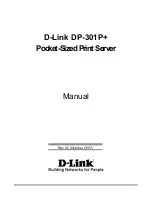
Process Resource Manager
Process Resource Manager
Process Resource Manager
Process Resource Manager (PRM) controls the resources that processes use during peak system
load. PRM can manage the allocation of processor, memory resources, and disk bandwidth. It
allows administrators to run multiple mission critical applications on a single system, improve
response time for critical users and applications, allocate resources on shared servers based on
departmental budget contributions, provide applications with total resource isolation, and
dynamically change configuration at any time-even under load. (fee based)
HP-UX Workload Manager
HP-UX Workload Manager
HP-UX Workload Manager
HP-UX Workload Manager (WLM) A key differentiator in the HP-UX family of management tools,
Workload Manager provides automatic processor resource allocation and application
performance management based on prioritized service level objectives (SLOs). In addition, WLM
allows administrators to set real memory and disk bandwidth entitlements (guaranteed minimums)
to fixed levels in the configuration. The use of workload groups and SLOs improves response time
for critical users, allows system consolidation, and helps manage user expectations for
performance. (Fee based)
HP's Management Processor
HP's Management Processor
HP's Management Processor
HP's Management Processor enables remote server management over the Web regardless
of the system state. In the unlikely event that none of the nPartitions are booted, the
Management Processor can be accessed to power cycle the server, view event logs and
status logs, enable console redirection, and more. The Management Processor is
embedded into the server and does not take a PCI slot. And, because secure access to the
Management Processor is available through SSL encryption, customers can be confident
that its powerful capabilities will be available only to authorized administrators.
OpenView Operations Agent
OpenView Operations Agent
OpenView Operations Agent
OpenView Operations Agent-collects and correlates OS and application events (fee-based)
OpenView Performance Agent
OpenView Performance Agent
OpenView Performance Agent
OpenView Performance Agent-determines OS and application performance trends (fee-based)
OpenView GlancePlus
OpenView GlancePlus
OpenView GlancePlus
OpenView GlancePlus-shows real time OS and application availability and performance data to
diagnose problems (fee-based)
OpenView Data Protector (Omniback II)-
OpenView Data Protector (Omniback II)-
OpenView Data Protector (Omniback II)-
OpenView Data Protector (Omniback II)-backs up and recovers data (fee-based)
In addition, the Network Node Manager (NNM) management station automatically discovers, draws
(maps), and monitors networks and the systems connected to them.
All other OpenView management tools, such as OpenView Operations, Service Desk, and Service
Reporter, will be able to collect and process information from the agents running on the server.
General Site Preparation Rules
General Site Preparation Rules
General Site Preparation Rules
General Site Preparation Rules
AC Power Requirements
AC Power Requirements
AC Power Requirements
AC Power Requirements
The modular, N+1 power shelf assembly is called the Front End Power Subsystem (FEPS). The
redundancy of the FEPS is achieved with 6 internal Bulk Power Supplies (BPS), any five of which can
support the load and performance requirements.
QuickSpecs
HP 9000 Superdome Servers (PA-8600, PA-8700, PA-
HP 9000 Superdome Servers (PA-8600, PA-8700, PA-
HP 9000 Superdome Servers (PA-8600, PA-8700, PA-
HP 9000 Superdome Servers (PA-8600, PA-8700, PA-
8800 and PA-8900)
8800 and PA-8900)
8800 and PA-8900)
8800 and PA-8900)
System Management Features
DA - 11721 Worldwide — Version 28 — October 23, 2009
Page 30















































